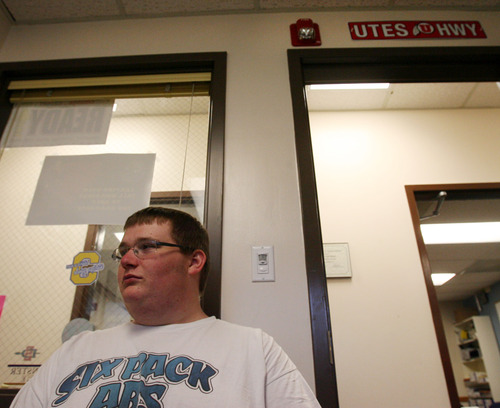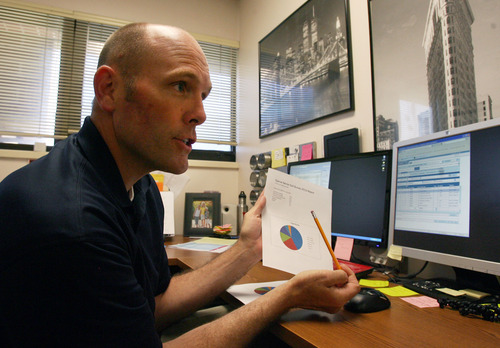This is an archived article that was published on sltrib.com in 2013, and information in the article may be outdated. It is provided only for personal research purposes and may not be reprinted.
Magna • For Cyprus High School senior Alexius Artez, going to college has always been a goal, but she didn't actually start thinking about how she was going to pay for it until her junior year.
"I was really set on the U. [University of Utah] and then things started to become reality," Artez said. "I was like, there's no way I can pay for that."
So she'll attend Salt Lake Community College this fall instead, where tuition will be $2,924 compared with $6,511 at the University of Utah.
Rising tuition coupled with shrinking state support are the financial realities of higher education today, forcing many students to turn to student loans and making it all the more important to get students and families thinking about how to pay for college earlier.
A recent national survey by the College Savings Foundation shows 49 percent of high school students have already started saving for college, up from 45 percent last year, and nearly 29 percent are saving through a 529 college savings plan.
That's good news, said Lynne Ward, executive director of the Utah Educational Savings Plan (UESP), Utah's 529 plan, which saw a 12 percent jump in new accounts last year.
"It is never too early to prepare financially for the cost of college," Ward said. "UESP mails a postcard to Utah mothers of newborn children six to eight weeks after the birth of the child encouraging them to open a UESP account."
But for too many Utah high-schoolers and their parents, that message to save doesn't sink in until college is right around the corner. Craig Sudbury, a guidance counselor at Cyprus High, says a student's socioeconomic status and the expectations of parents and family to go to college are prime factors in whether students are saving for post-high school education or not.
"There's information out there, I just don't think it's that real to them," he said. "Once they start applying to colleges, it gets real."
Judy Petersen, director for college and career readiness at Granite School District, says the district is working harder to get students thinking about the costs of college. Last year, the district became one of about 100 districts across the country (the number also includes Salt Lake City School District and Logan School District) to participate in a program with the U.S. Department of Education. The program enables school counselors to see which individual students are completing a Free Application for Federal Student Aid, or FAFSA, a key indicator that students are planning to attend college.
She said in Granite district last year, only 25 percent of graduating seniors completed FAFSA forms, "so we have a lot of room for growth."
"We're doing a better job of that than we've ever done before, equipping parents with the info they need so they can make better decisions," she said. Still, "a lot of students are not preparing."
The College Savings Foundation study also showed that high school students overwhelmingly — 93 percent — plan to hold down a job while going to school. That sounds about right to Petersen.
"Our message is it takes a package to pay for college: maybe some scholarship money, maybe some financial aid and maybe some working," Petersen said. "A lot of students will say, 'Whoa, I didn't really think about working,' but I think that message is getting out in our district more clearly now."
Cyprus High senior Artez has gotten the message loud and clear. Qualifying for $5,600 in federal Pell Grant funds and landing a scholarship will help her with college expenses, but with little savings and her parents unable to contribute, Artez knows she'll have to find a job to fund her dream of eventually going to medical school.
"It's all me," she said. "I'm definitely going to have to work all through college."
Twitter: @jnpearce —
Saving for college
A national survey of high school sophomores, juniors and seniors shows:
93 percent plan to work during college.
80 percent are concerned about student debt.
49 percent have started saving, up from 45 percent in 2012.
29 percent are saving through a 529 college savings plan.
17 percent plan to attend a private college, down from 21 percent last year.
Source • College Savings Foundation 2013 Survey







